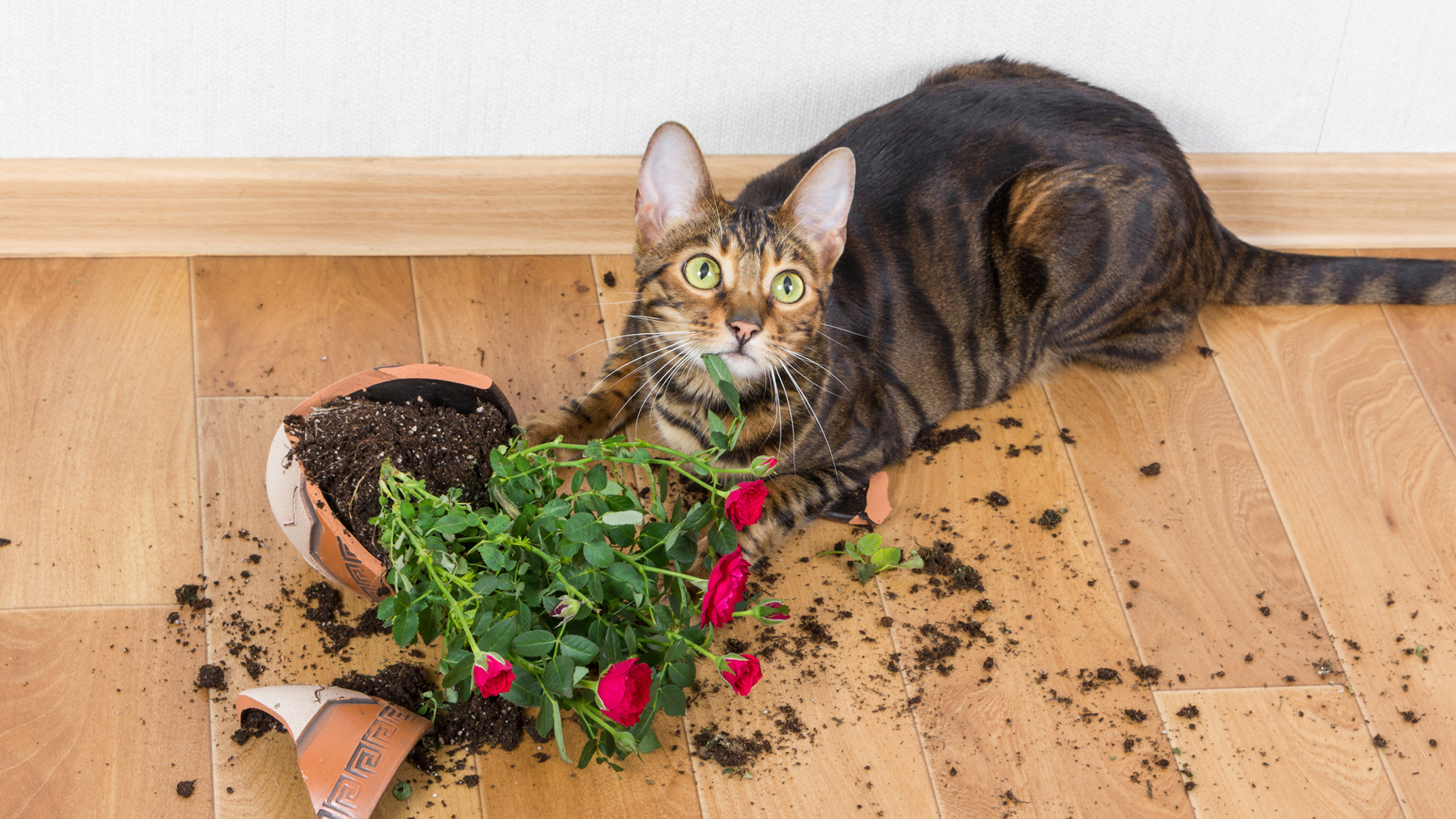
It’s very common for pet owners to train their dogs, but many may wonder, can you train a cat? Believe it or not, cats CAN be trained to do commands and tricks, but it usually requires much more patience than training a dog.
Training can provide many benefits for cats, such as promoting desirable behaviors and preventing undesirable ones. It can also act as a form of mental stimulation for cats to keep them entertained. Cat training is most effective when using positive reinforcement techniques, and cats should never be punished as this usually does more harm than good.
If you’re looking to train your cat, you will want to consider what your cat finds the most motivating—for example, it’s a good idea to stock up on the best cat treats if your cat is food motivated.
Whether you're a new cat owner or looking to enhance your feline friend's skills, we've got you covered. So sit back, relax, and delve into everything you need to know about training your fabulous furry friend...
Is it possible to train a cat?
Yes, it is possible to train a cat! However, don’t expect this to be as easy as training a dog. Cat training generally requires more time and patience than dog training because while most dogs want to please their owner, cats tend to be more concerned with pleasing themselves.
Cat training can come with several benefits, including providing mental enrichment, (meaning no more worrying over the question, 'is your cat bored?'), preventing unwanted behaviors, and improving the bond between the cat and their owner. It can also prevent boredom (a relief to any owners worrying over the commonly asked question 'is your cat bored?), which can further reduce undesirable behaviors.
According to the Feline Behavior Guidelines from the American Association of Feline Practitioners (AAFP), training can also benefit cats in stressful situations such as going to the vet by redirecting their attention to familiar commands.
Like dogs, cats can be trained to do basic commands such as sit, stay, lie down, come, and shake. They can also be trained to be handled safely, and some owners have even managed to toilet train their cats!

How do you train a cat?
The best way to train a cat is to use positive reinforcement with rewards, such as treats or praise. This generally involves producing a consistent sound (i.e., saying a certain word or using a clicker) when the cat performs a desirable behavior and immediately providing a reward, like one of the cat’s favorite treats. This allows the cat to associate the behavior with the sound, and the sound with a reward. Wondering, is clicker training for cats recommended? Yes, it is and it’s great for teaching specific behaviors like recall, paw-to-hand touches, or relaxing on a mat.
Positive reinforcement can also help with deterring bad behaviors like scratching the furniture. Cats who are prone to scratching the couch or other household items can be redirected to one of the best cat scratching posts, and once they begin to use it, the sound can be made and a treat can be given.
It's important to avoid making a big deal about bad behaviors, as this may provide the cat with the attention they crave, thus inadvertently encouraging the behavior. For example, if your cat bites or scratches you during play, your cat may think that if you yell and jerk your hand away that you are still playing. It is generally best to ignore unwanted behaviors completely (once you have removed your hand in this situation, of course) and then reward when your cat stops.
As with dog training, clicker training can be utilized in cats. A 2017 study published in the Animals journal, evaluated clicker training in 100 shelter cats to see if it could reduce stress. The cats were given 15 five-minute training sessions over two weeks, and the researchers found that the cats performed better on all of the trained behaviors after clicker training. Interestingly, the cats who were more interested in food and those who were more confident improved the most after clicker training.
What motivates a cat?
What motivates a cat will depend on the individual cat since each one will have their own preferences. Treats are the most common reward, but cats may also respond to praise, playing, stroking, grooming, or catnip. You may need to experiment a bit to see which reward motivates your cat the most.
There are many different cat treats on the market that can be used for training purposes. It is best to pick something that is either small or easily broken into smaller pieces (i.e., semi-moist or freeze-dried treats) to avoid overfeeding your cat. If you are feeding your cat lots of treats while training them, it’s important to reduce their meals accordingly to prevent them from becoming overweight or obese, which increases their risk of developing certain diseases like diabetes and arthritis.
According to the AAFP’s statement on positive reinforcement in cats, rewards are most effective when given within three seconds of a desired behavior. This is because if you wait too long, your cat may associate the reward with a separate behavior or action. As your cat begins to perform certain commands and wanted behaviors more consistently, you can slowly reduce the frequency at which you give a reward until the behavior becomes learned.

Should you punish a cat?
Cats should never be punished, during training or otherwise. Punishment can lead to increased stress, fear aggression, and a breakdown of the bond they have with their owner. Positive reinforcement is preferred as it is more effective and not detrimental to cats’ health or well-being.
According to Cornell University, cats do not understand punishment because they don’t recognize its association with unwanted behaviors, especially since many destructive actions like scratching are actually normal behaviors for cats. The AAFP also notes that verbal punishments (i.e., yelling) may actually reward cats by placing emphasis on an undesirable behavior.
If your cat is misbehaving, it is better to ignore them completely or redirect their attention to a wanted behavior, followed by a reward. This will be more effective than verbal or physical punishments, which can be linked to both behavioral and medical issues. Positive reinforcement is the way to go to keep your cat happy and entertained.







